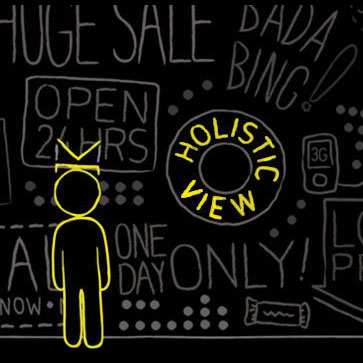The New Rules of Digital Advertising

FTC Updates Guidance on Ad Disclosures
Consider, for a moment, how digital advertising has evolved since the Web's inception. It's become more engaging, personal and meaningful to consumers, and when done right, more measurable and effective for businesses as well.
Yet with all the advancements that have been made in the past 10-15 years (in both a creative and technical sense), enterprises that spend on digital advertising must remain cautious that they comply with the "rules" set forth by the FTC.
The newly updated Dot Com Disclosures guide from the FTC, which was initially released back in 2000 (a far different digital time) now takes into account the expanding use of smartphones, as well as the rise of social media marketing. It's a rather significant development that the digital advertising and Internet marketing industry must become familiar with.
While on the surface not much has really changed in the document other than to expand the guidance across all known digital mediums and to clarify disclosure policies for new virtual environments, revisiting the guidance can ensure promotional campaigns keep humming along without legal interference.
Agencies and advertisers should examine the document rather closely though, if only for the confidence that their campaigns are in compliance with the FTC guidelines. In particular, they should review the sections on proximity and placement, prominence, the use of "understandable language" as well as how this all applies to multimedia messages. Let's take a closer look.
Many of the FTC's updated regulations are similar in scope and concept to those relating to traditional advertising, such as place disclosures near the claim that is being highlighted; display those claims prominently; don't hide the claims in the small print or terms of use; use clear language; and don't use fuzzy graphics, fonts or colors to camouflage disclosures.
But the details of the updated rules also relate directly to the digital arena. The FTC, for example, noted that beginning a Twitter message with the phrase "Ad:" could satisfy its disclosure requirement for paid endorsements, leaving plenty of remaining characters to convey a brand's message. The commission also indicated that disclosures can't be placed in a separate tweet, because consumers may not realize the two Twitter messages are connected.
In cases where a disclosure includes complex or detailed information, it may be appropriate to provide the disclosure via a hyperlink from the online advertisement, the FTC noted. Such a hyperlink "should be labeled clearly and conspicuously." The primary consideration should be clarity for the consumer.
"The ultimate test is not the size of the font or the location of the disclosure, although they are important considerations; the ultimate test is whether the information intended to be disclosed is actually conveyed to consumers," the FTC report said.
Keep in mind that the FTC guide reiterates that technological limitations are not a defense to false or deceptive advertising charges, even as more progressive technologies emerge (e.g. smart watches). The FTC will continue to hold advertisers to these standards, so if a company is finding compliance difficult, because of the complexity of existing constraints, it should follow this advice: Don't ruin the consumer's digital experience.
The FTC's ultimate test of compliance is whether the "information intended to be disclosed is actually conveyed to consumers." Undoubtedly, the FTC will start enforcing its new guidelines within the year, so advertisers need to audit their advertising closely - perhaps even with the support of legal counsel. Audits should address the necessary disclosure requirements, examine current disclosure practices, and seriously consider changes needed to minimize risk and enhance the brand's reputation to remain in the good graces of the FTC and users.









